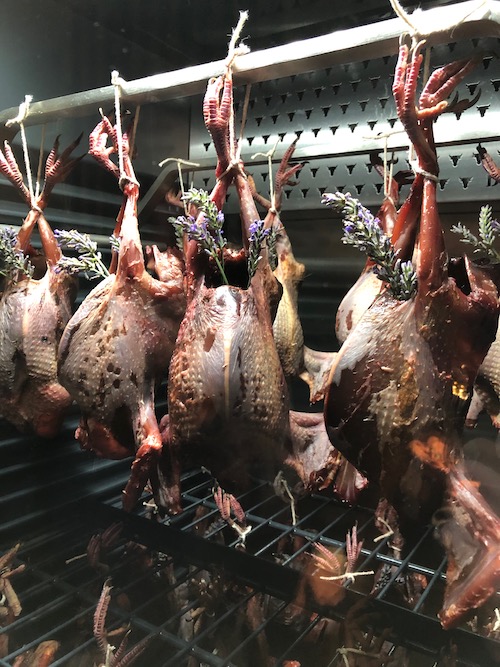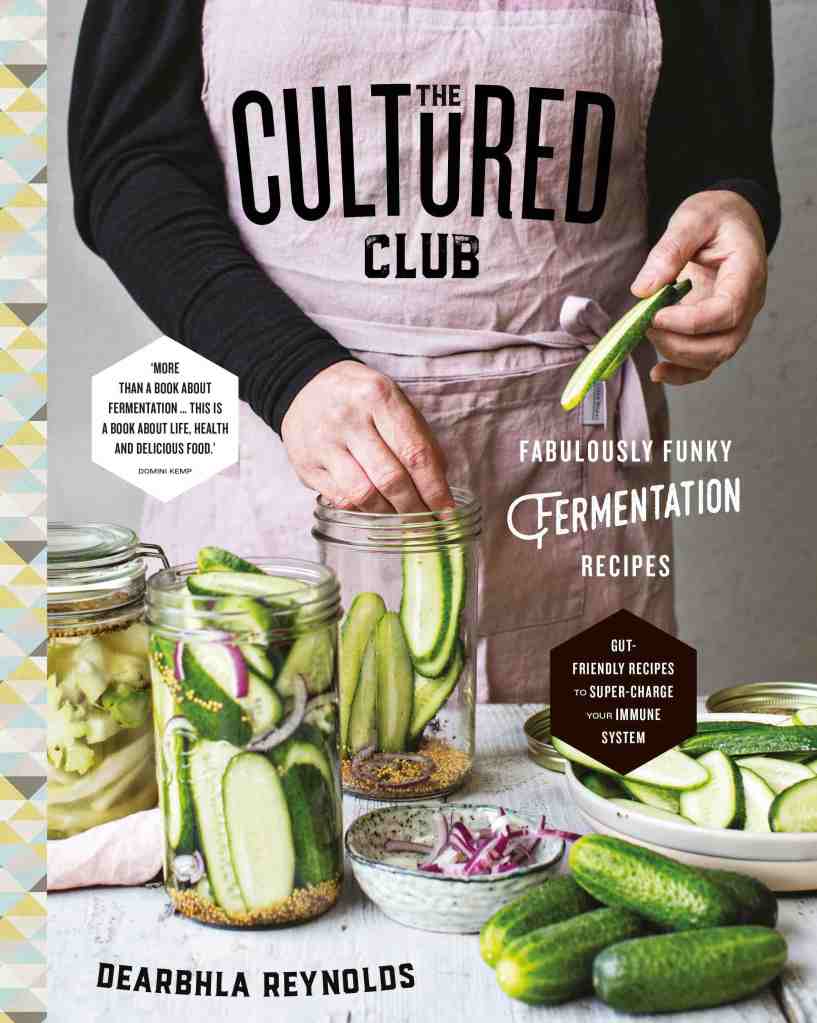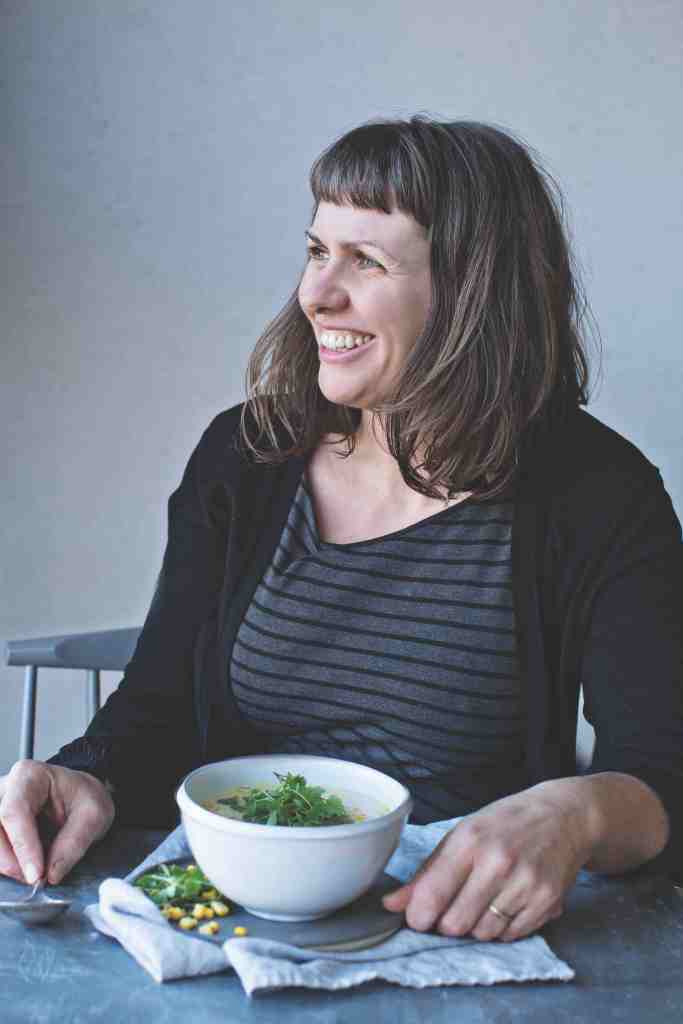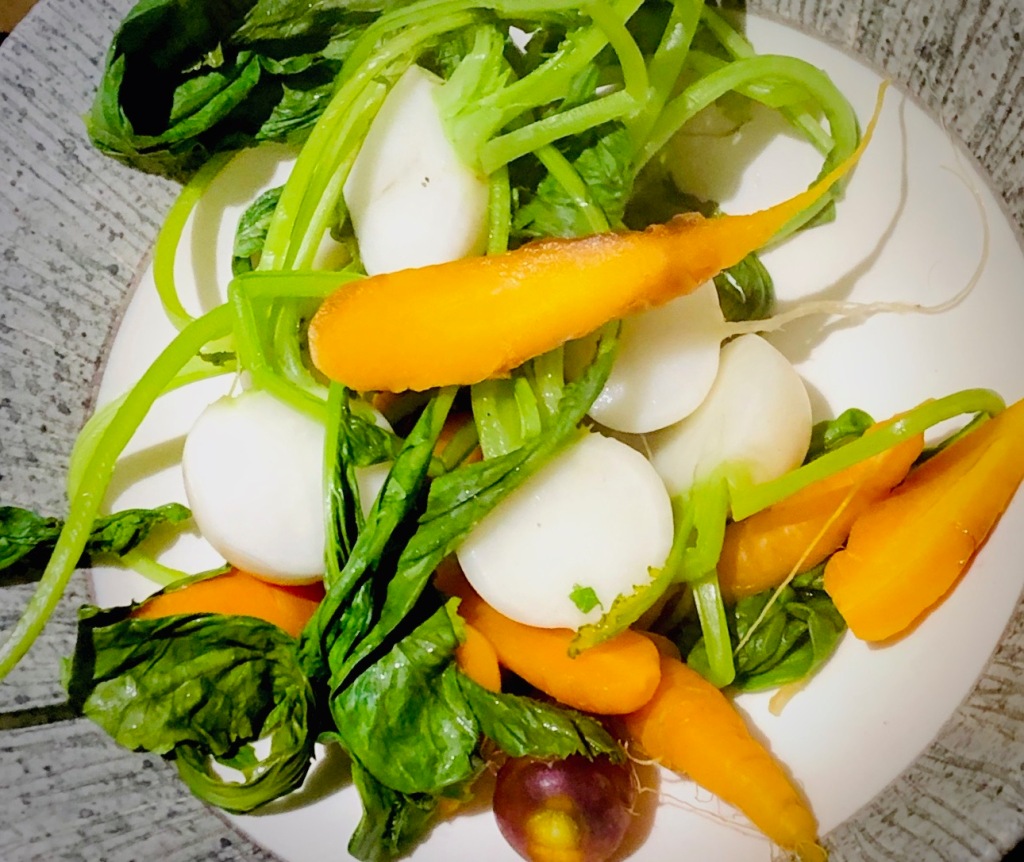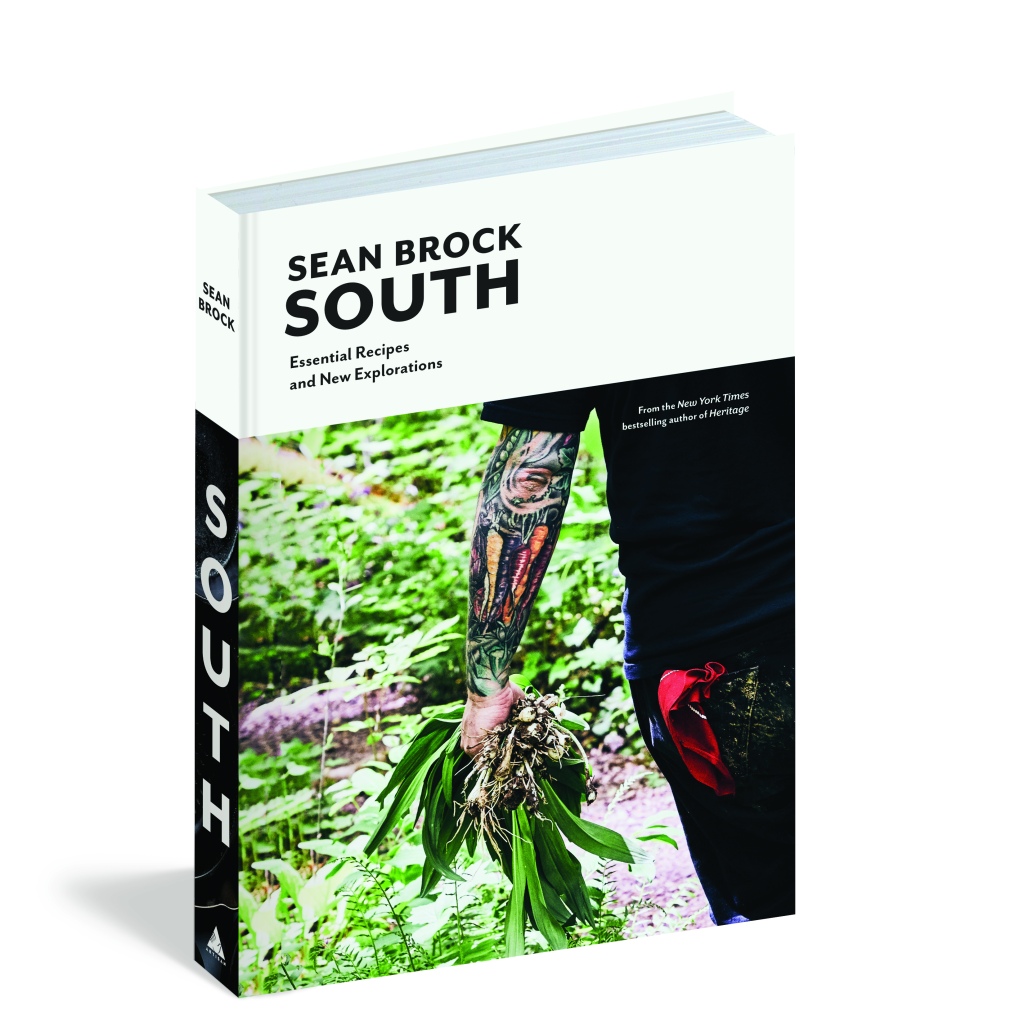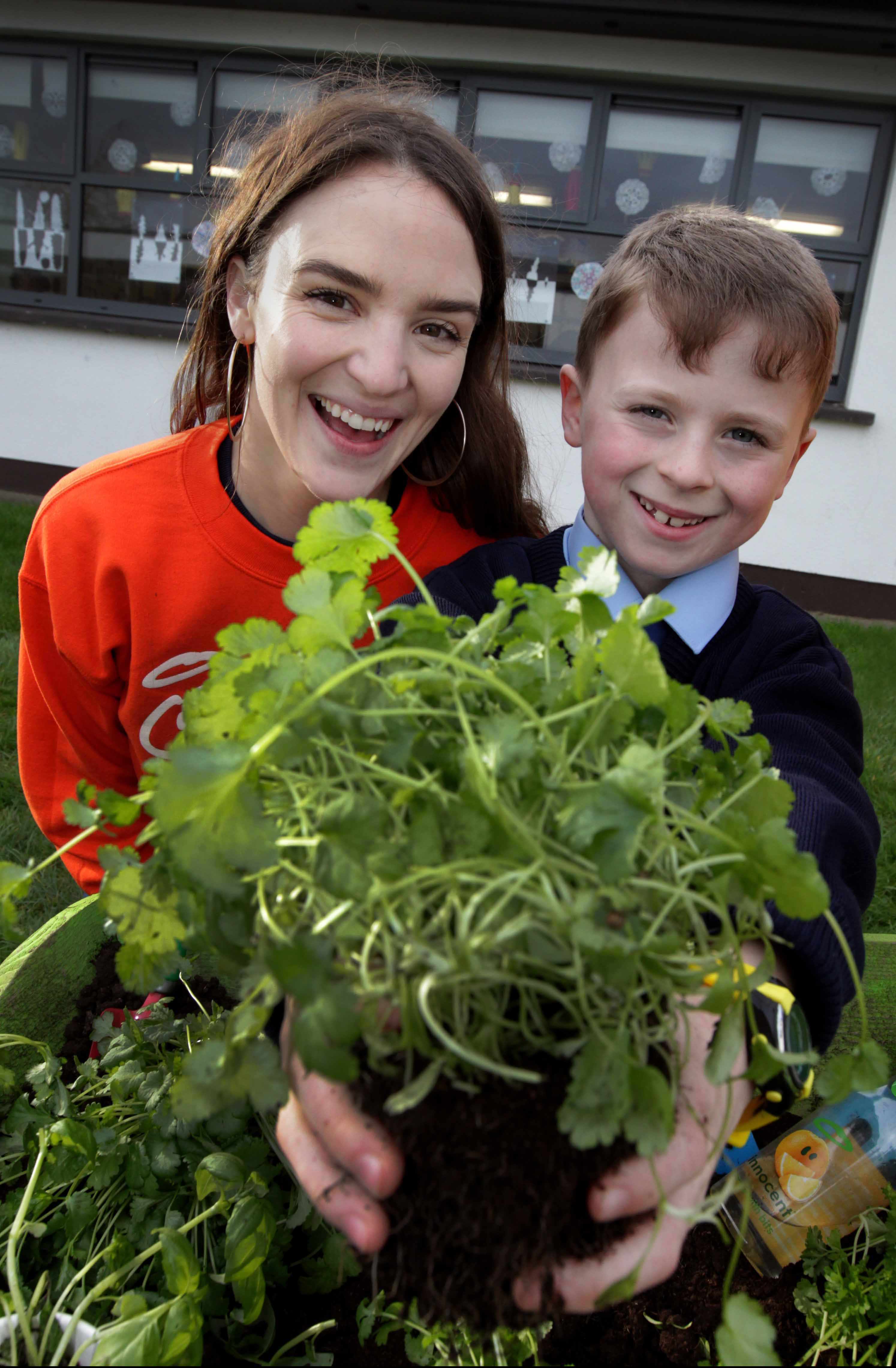
Lasagne Orson Welles
I’m posting this recipe in response to multiple requests for same after I put the above pic on Instagram and Facebook. It is a dish so luxuriously rich, that even the picture itself exudes calories and I can only conclude that, during an especially bitterly cold and stormy spell across the entire country, forcing us indoors and further tightening the strictures of this extended lockdown, many others were of a like mind, craving extreme comfort—and believe me, this is a winter comforter that’ll have you subsequently crawling into your cave to sleep it off until spring.
It all began with a desire to do unmentionable things to aubergines using some of the five litres of exquisite Greek olive oil (Tzortzis Family) recently acquired in the Quay Co-Op, for there few things as pleasurable as the lush silky flesh of aubergines when they have been slow-cooked in finest olive oil.
I have a bit of a thing for aubergines. For several years running, I cooked a series of dinners for Taste of West Cork food festival, in the magnificent main hall of the Uillinn West Cork Arts Centre, in Skibb, using entirely local produce.

One year, as part of a nine-courser for 35, I served up braised lamb but what made it truly special was the accompanying puree of aubergines, that I roasted over coals at 3am the night before back in Schull, and then added to elephant garlic (West Cork Garlic) confited in Glenilen Butter, all finished with tangy Glenilen yoghurt. The lamb was delicious but this exotic addition was truly transporting.
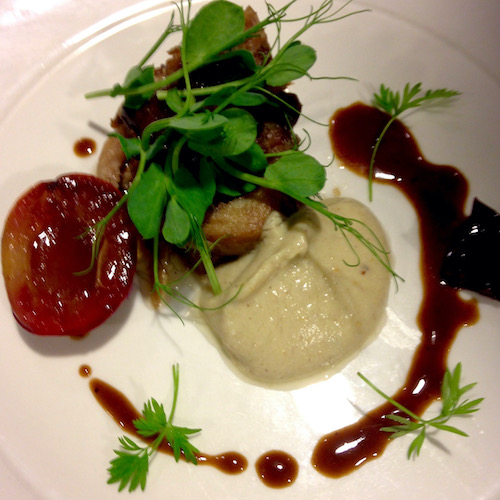
Walsh Butcher’s Lamb shoulder, Thornhill Farm Aubergine, West Cork Garlic elephant garlic, Glenilen Butter and Yoghurt, spiced local plums, beetroot, and pea shoots. Served at The Menu Cooks The Menu TOWC 2017.
Local aubergines? Yep, these came from Thornhill Organic Farm, just out beyond Skibb town and were absolutely superb. (Once upon a time, the very superb grower for Cafe Paradiso, Ultan Walsh, was told he’d never be able to grow aubergines in Ireland. So he promptly grew ten different varieties the very next season and each and every one was truly exquisite.) Obviously, there were no local ones available to me on this particular winter’s evening so far out of season but I made do with some serviceable imported substitutes from the local shop—that’s one of the benefits of aubergines, you can add an awful lot of flavour in the cooking.
But, unable to leave well enough alone, and with a fridge full of other layabouts badly in need of gainful employment, my initial desire to render the aubergines as antipasti grew legs and before you knew it, I was talking ‘lasagne’. I began to improvise further, beginning with a hunk of maturing Cashel Blue cheese, some aged Coolea, procured from Kevin Collins, in Field’s Supermarket, in Skibb, and a portion of smoked butter left over from a finish-at-home dinner kit from the very wonderful Pilgrim’s restaurant, in Rosscarbery. After that, I lost the run of myself entirely.
When we came to eventually taste at the table, we found the complex flavours of this dish plumbing depths greater than the Challenger Deep and tastes and textures so decadently unctuous that my Other Half—coincidentally, most slender in comparison to my good self, what’s all that about?—hauled up the white flag all too soon, managing just a ‘tiny’ portion.
Truth be told, you’re probably best off serving up ‘smaller-than-your-usual’ portions alongside a crisp, bitter green salad to offset the inevitable glazed torpor and then returning if you have the stamina. After that, bag up individual servings for the freezer—unless, of course, you take after that legendary grazer, the gloriously gluttonous Orson Welles (hence the name) and fancy you could put the entire schemozzle away in a single sitting!
Recipe
It’s not rocket science but there are several steps ever before you layer the lasagne so it’s well worth reading right through to thoroughly acquaint yourself with the recipe. Some stages can be done a day in advance (eg confit aubergine or tomato sauce; even longer for the sauce, if taken from the freezer). Also, remember every domestic oven is different so always allow for variations when considering times and temperatures. Then decide your own order of work. I did it as follows:
- Confit Aubergines, while in oven …
- Start tomato sauce, while that’s cooking …
- Toast Walnuts
- Prep and steam kale
- Remove aubergines from oven.
- If using dried lasagne sheets, lay them in a shallow tray of cold water to soak for 15 to 20 minutes until soft, fulsome and floppy, akin to how they were when fresh.
- Make Béchamel
- Layer lasagne
Ingredients & Technique
As always, any dish I cook is immeasurably improved by seeking out the very best of local, seasonal produce from finest producers in my area, along with a few judicious imports, so some of these exact ingredients may be hard to find in your own stomping grounds. Adapt accordingly, employing the very best substitutes local to you. Ingredients are listed separately, to go with each step or stage of the dish, rather than in a single list.
Confit Aubergines
- 2 Firm, fresh aubergines, (You can also add more aubergines and reserve the extras for later use as a cold and extremely delicious antipasti.)
- 1 tablespoon of fine sea salt
- 5 cloves garlic
- Sprigs of thyme, rosemary, sage
- Olive Oil, aprox, 300-400ml, sufficient to cover aubergines in oven dish. There is no waste as the oil can be kept as an exquisite ingredient for future use, eg dressing salads or steamed vegetables.
Turn on oven to 200˚C
Slice aubergines lengthways, top to tail, 1/2 cm thickness, rub in salt and leave for half an hour to drain. (This used to be done to remove the ‘bitterness’ from aubergines but that trait has long been bred from the commercially grown fruits, but I still tend to salt a lot of my vegetables to concentrate flavours. In this case, it ‘dries’ them out, the better to absorb the precious oil.)
Rinse and pat dry aubergines and layer them in a high-sided oven or casserole dish. Intersperse whole garlic cloves and herbs between layers. Cover in oil, working it through to every slice with your fingers.
Put in oven for aprox. 30 minutes until aubergine flesh is soft and luscious, just about holding together. (Check after 20 minutes if unsure or allowing for variations in oven temperatures.) When done, remove from oven but, remember, oil is still very hot so carefully remove aubergines to a cold plate with a fish slice otherwise they will continue cooking. Reserve oil and if you have cooked an excess of aubergines for antipasti, return them to the oil when it is completely cold.
Tomato Sauce
- 2 tins of good preserved tomatoes
- 1 shallot, diced
- 2 tablespoons of white wine vinegar
- 2 cloves of garlic, diced
- 1/2 tsp fine sea salt
- 1 tbsp of excellent tomato puree (if you don’t have it, leave it out!)
- 1 bay leaf
- 1 teaspoon of chopped fresh rosemary
- Too much of that very fine olive oil
- Confit garlic cloves from the confit aubergines
- 2 tablespoons of confit aubergine cooking oil
Sautée shallot in olive oil until softening, add garlic and herbs, sautée for another minute or two, stirring regularly. Add salt, cook in, stirring. Add vinegar, reduce for a minute. Add tinned tomatoes, stir well, cover pot with lid and turn down heat to simmer for 30 mins, checking regularly to ensure it is not sticking to bottom of the pan (I like to use a very heavy Dutch Oven over a heat diffuser, double or treble the quantities and cook for much longer to intensify flavours, freezing excess, as a good tomato sauce from the freezer is an excellent standby for last minute meals.) Tomatoes should eventually reduce to a pulp and you know you have achieved perfection when a glistening layer of olive oil begins to separate from the rest of the sauce. Turn off heat, add confit garlic cloves (yes, that is a lot of garlic and your problem is …?), confit oil and then puree. Taste for seasoning, salt and acidity—another tablespoon of good vinegar can really lift and sharpen at this stage as the sauce will be acting as counterpoint to the overall richness.
Curly Kale
- 1 bag of fresh Kale (aprox 200gm), stripped from stalks and sliced thinly into ribbons
Steam over boiling water for four to five minutes. Drain, refresh in ice water or very cold running tap.
Walnuts
- 100gm walnuts
Toasted in oven (200˚C) for eight to ten minutes. Again, know your own oven and keep an eye on them if it’s your first time roasting nuts.
Smoked Butter and Cashel Blue Cheese Bechamel
Why the enormous quantity? Well, you’re also making enough for the killer Mac’n’Cheese, a dish I personally abhor and dub The American Death Penalty, but to which the progeny are very partial, much more partial than they would be to, say, the ‘complexities’ of Lasagne Orson Welles. I rustled up a massive dish of it as I was doing this and had them fed ever before we sat down for our own dinner while the rest of it went into the freezer. There’s a portion behind me on the shelf defrosting while I type this, making for one less meal to be cooked tonight.
- 1.5 litre full fat milk (I used a two litre container of Gloun Cross that had been overlooked in the back of the fridge, so this gorgeous creamy—and unhomogenised—milk was beginning to sour, too sharp for drinking but perfect to add further to the flavours of the sauce)
- 200gm Cashel Blue Cheese, crumbled
- 200gm Grated Aged Coolea
- 150gm plain flour
- 100gm butter
- 50gm smoked butter (Cork smoker Frank Hederman does a particularly delicious version, the first I ever tasted, probably some six or seven years ago, and it is available from the English Market, via Neighbourfood or from their online shop.) Don’t worry if you can’t get smoked butter, there’s still more than enough going on in the flavour department. Simply add another 50gm of plain butter—as if wondrous butter could ever be described as ‘plain’!
- 1 clove garlic, chopped
- 1/2 tsp smoked paprika
- 1 Bay Leaf
- 10 black peppercorns
- Sprig of fresh sage leaves
- Sprig of thyme
- Healthy dash of Worcestershire Sauce
- Salt to season
Heat milk, bay leaf and peppercorns until almost boiled, set aside.
Melt butter in heavy based saucepan over medium heat, when milk solids cease sizzling add garlic, herbs and paprika, sautée for a minute.
Add flour, stir into melted butter until all is absorbed, leave over heat for three to four minutes to cook through the flour, stirring keep from sticking. It should brown ever so slightly.
Begin to add heated milk, roughly a cupful at a time, stirring into the butter/flour roux. Don’t worry too much about lumps, you can whisk them out in time.
Continue adding in milk, stirring to incorporate, until all milk has been added, cook over low heat, stirring constantly until it really thickens. Season to taste, 1/2 tsp is good but add it, stir it through well for a minute or two and taste again before being tempted to add more. Switch off heat, add Cashel Blue and Coolea, stirring until melted. Stir in dash of Worcestershire sauce. Set aside.
Assembling the Lasagne
Oven 200˚C
- 200gm grated Aged Coolea (yep, more of it!)
- 15 sheets of lasagne, pre-soaked in cold water for about 15-20 minutes
- 20gm soft butter to grease the lasagne dish
Grease the lasagne dish with butter
Line bottom of dish with sheets of pre-soaked lasagne. Handle carefully as they might tear.
Spread thin layer of tomato puree on sheets with spatula.
Add layer of aubergines.
Add layer of kale.
Stud with toasted walnuts.
Pour over béchamel, spread with spatula.
Sprinkle with grated Coolea.
Start another layer, beginning with lasagne and repeat to finish with three layers.
Top with remaining sheets of lasagne.
Pour over last of the Béchamel, sprinkle with last of grated Coolea.
Bake in oven for aprox. 15 mins until bubbling and crisp and golden on top.
Serve with a crisp green salad and bitter salad. Some people—and I have betimes numbered myself in their company—reckon you can’t have lasagne without garlic bread but, in this particular instance it might be a step too far without a half-way decent and reasonably sober cardiologist at the table and with a working defibrillator to hand. Enjoy!

